- Home
- Technology
-
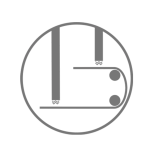
Spray Bonding
In Spray/chemical bonding, chemical binders (adhesive materials) are used to hold the fibers together in a nonwoven fabric. Chemical binders are polymers that are formed by emulsion polymerization. The mostly used binders today are water-borne latexes. They are applied in a number of different ways to nonwovens and because of their viscosity is close to that of water they can easily penetrate into nonwoven structure by emulsion. After application of binder by, for example, immersion, they are dried and the water evaporates. The binder then forms an adhesive film across or between fibre intersections and fibre bonding takes place.
We have 1 line for Spray Bonding upto 120″ width.
GSM range from 20~700.
-

Thermal Bonding
In order to perform thermal bonding of the fibrous web structures there is a prerequisite that must be met. Fibrous web must include thermoplastic fibers or at least thermoplastic powders. Most commonly used thermoplastic fibers are polypropylene, polyester, nylon, polyethylene and some others. This method is applied generally to high loft structures to get homogenous bonding. In impingement method (another name for through – air bonding), web is transported to the oven and from the nozzles hot air is impinged to the web surface and bonding formation is occurred. As it may be guessed, in this method the bonding efficiency on the surface can be good while it is very few, even close to zero, in the depth of the web.
We have 1 line for Thermal Bonding upto 120″ width.
GSM range from 40~2000.
-
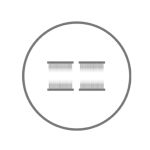
Needle Punching
Needle punching is the oldest method of producing nonwoven products. It is a mechanical process to turn fibre to fabric. The web for needle punch nonwoven is made with the help of dry-laid technology mainly by carding process. This process involves forcibly entangling layers of loose staple fibres or filaments into a 3-D structure by alternately punching and pulling out beds of barbed needles. With needle punching or mechanical bonding, strong yet flexible and comparably thick nonwovens are produced.
We have 2 separate lines for Needle Punching (mostly European/USA brand) with the width of 4Mtr and 6 Mtr respectively.
GSM range from 40~1200 Normally and upto 2000 on specific requirement.
-
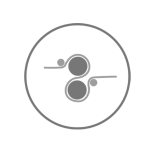
Calendering
In calendar bonding, web is passed between heated rollers and bonding occurs at that time. If the rollers are smooth then it also helps in providing smooth surface of fabric. The produced fabric with this method will be strong, stiff, and relatively thinner with better surface quality.
We have 2 Machines with 3 rollers upto 4Mtr and 2 rollers for 6 Mtr respectively.
-
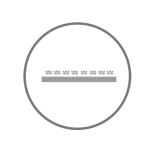
Singeing
The process of singeing helps in removing protruding fibres from the surface of the fabric along with providing strength. Singeing of fabric is normally done when smooth and clean (not hairy) surface is required like in printing or coating.
-
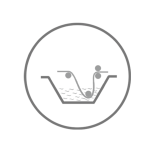
Chemical Dipping
For special requirements for industry we have facility to provide special chemical treatments through separate dipping line.
Our machine can provide fabric upto 1 Mtr Width.
